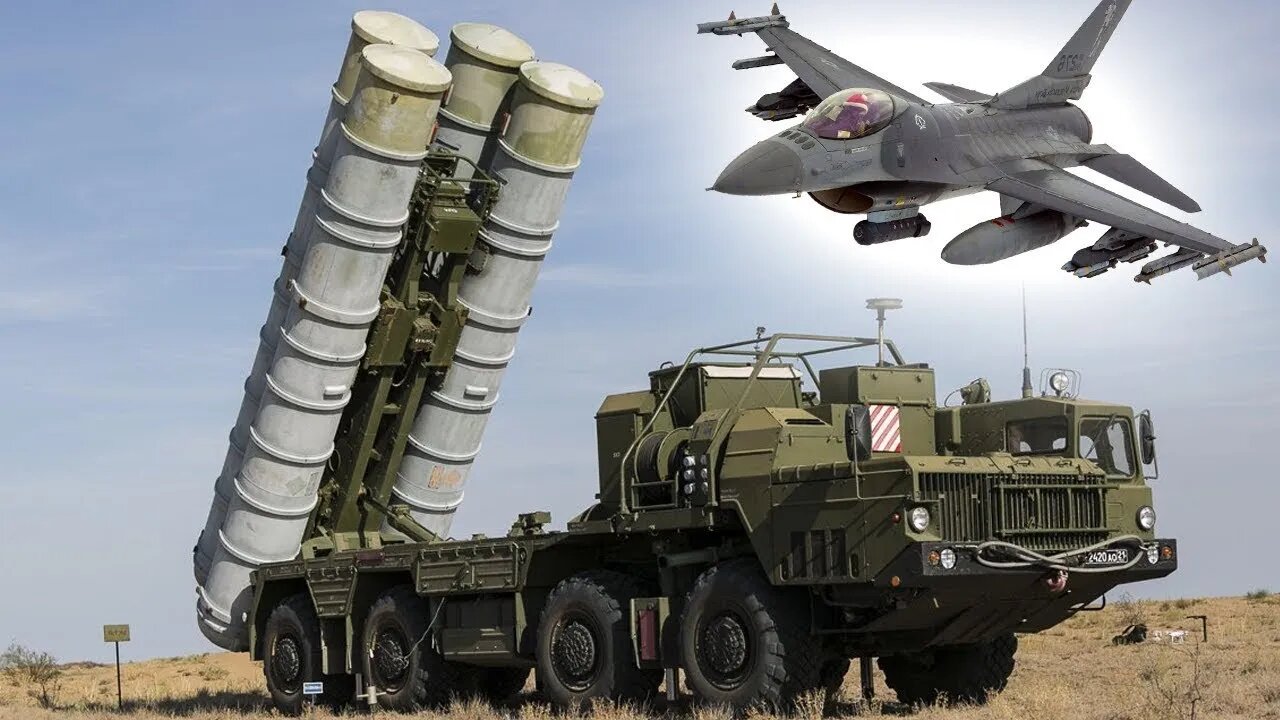Premium Only Content

How The Russian S 300PMU 2 Missile Defense System Works
Armed Machines invites you to watch a ….
How The Russian S-300PMU-2 Missile Defence System Works
How the Russian S-300PMU-2 missile defence system works
1. The long-range surveillance radar tracks objects over a range of 300km (185 miles) and relays information to the command vehicle, which assesses potential targets
2. A target is identified and the command vehicle orders the engagement radar to launch missiles
3. Launch data is sent to the best placed of the battalion's six launch vehicles and it releases two surface-to-air missiles
4. The engagement radar helps guide the missiles towards the target. It can guide up to 12 missiles simultaneously, engaging up to six targets at once The vehicle used as a launcher is currently manufactured at the Minsk Wheel Tractor Plant (MZKT) in Belarus, although Russia is now shifting the production to its western city of Bryansk. Russian S-300PMU system specification
Specification: Each launcher vehicle carries four missile containers (two missiles per target). A full battalion includes six launcher vehicles with a total of 24 missiles, plus command-and-control and long-range radar detection vehicles
Special feature: Fires two missiles vertically within 3 seconds, making it versatile and accurate
Capability: Russian 48N6E are the standard missiles fired from S-300PMU launchers. They have a range of 5-150km (3-93 miles) at a maximum altitude of 27-30km (17-19 miles).
Response time: Vehicle stopping to missile firing is five minutes For the Russians, solving the problem of targeting a low observable aircraft is something that they continue to work on—but it is doubtful the Moscow has resolved the issue. Russia's strong investment in layers of air defenses tells us that the Kremlin believes the primary threat to its ground forces comes from U.S. airpower. As such, defeating stealth technology is one of Moscow’s top priorities, Kofman notes, and the Kremlin has dedicated a lot of resources to that end.
Russia has tried a number of different techniques to defeat stealth technology.
Among those is trying to develop a tight integrated air defense network with multiple radars trying to look at the same aircraft from different directions—but how effective those efforts have been is an open question. “It's great being able to see an aircraft, or parts of it, but getting accuracy such that you can confidently get a missile near the target is the primary challenge,” Kofman said.
The S-300 is a series of highly capable, long-range surface-to-air missile complexes first deployed in the USSR in 1979 and later modified by the Russian armed forces. As well as targeting aircraft, the fully mobile units have the capacity to engage ballistic missiles.
Experts believe that Russia is most likely delivering the S-300PMU-2 systems - also known by the Nato codename SA-20 - which were first introduced in 1997 and are comparable to the US Patriot Air and Missile Defense System.
The Russian batteries are made by a state-run company, Almaz-Antei, which last year announced it was stopping the production of the S-300s and switching resources to the more advanced S-400s.
🔻
Song: "Miguel Johnson - Good Day To Die [Epic]" is under a Creative Commons license (CC BY 3.0)
/ migueljohnson
https://migueljohnson.bandcamp.com/
Music promoted by BreakingCopyright: https://bit.ly/good-day-to-die-song
🔺
If you liked this video, subscribe to the NASA Goddard YouTube channel: https://www.youtube.com/channel/UCXG93goZEcdYAvLmD8zev0A
Follow Debugsol Software Solutions
· Instagram https://www.instagram.com/debugsol/
· Twitter http://twitter.com/DebugSol
· Facebook: http://www.facebook.com/debugsol.net
-
 2:23:58
2:23:58
Matt Kohrs
12 hours agoRumble's Stock Is EXPLODING!!! || The MK Show
46.8K3 -
 LIVE
LIVE
LFA TV
14 hours agoBOMBSHELL FINAL REPORT: BIDEN ADMIN SUPPRESSED WUHAN LAB LEAK | LIVE FROM AMERICA 12.27.24 11am EST
2,212 watching -

Grant Stinchfield
1 hour agoWe Built it... China Controls it... Trump Will Take it Back!
1131 -
 35:05
35:05
Rethinking the Dollar
1 hour agoTime to Pay the Piper! Debt Refinance Coming in 2025
404 -
 52:34
52:34
PMG
14 hours ago $1.37 earnedHannah Faulkner and Steve Friend | EXPOSE THE FBI CORRUPTION - KASH PATEL
3.05K1 -
 2:58:58
2:58:58
Wendy Bell Radio
7 hours agoOn Day One
62.3K59 -
 1:59:27
1:59:27
Jeff Ahern
3 hours ago $3.04 earnedFriday Freak out with Jeff Ahern (6am Pacific)
20.2K -
 1:56:07
1:56:07
Game On!
12 hours ago $1.28 earnedJosh Allen is the NFL MVP! It's not even close!
16.4K1 -
 13:05
13:05
Neil McCoy-Ward
3 hours agoWhy The Media Won't Tell You What Milei Did In Argentina...
17.6K1 -
 3:56:44
3:56:44
Alex Zedra
15 hours agoLIVE! Trying to get achievements in Devour
213K27